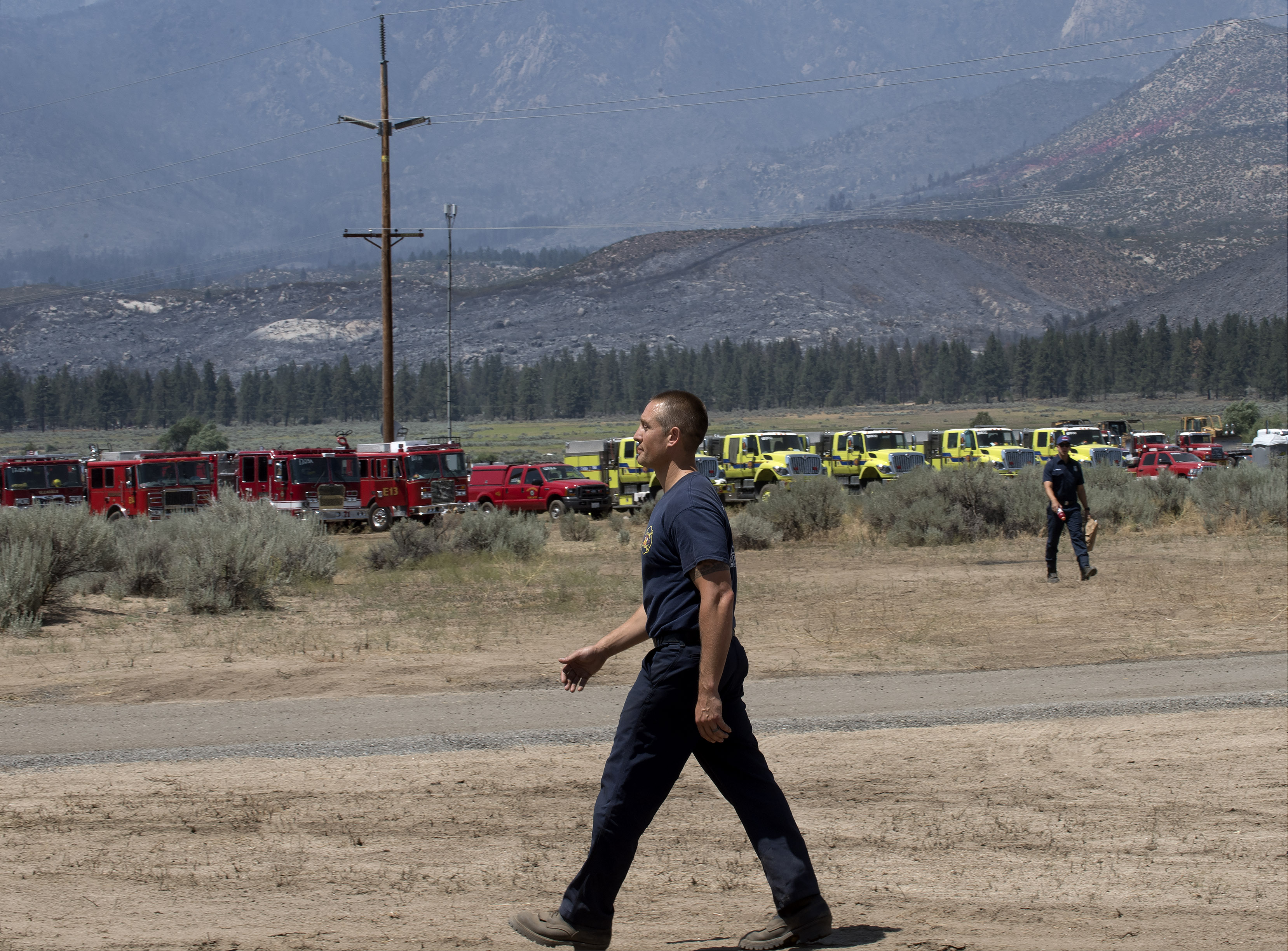Firefighters’ bare-bones life at Cranston fire camp
As stripped-down as life is for the 1,300 firefighters living out of the instant camp-city set up for the Cranston fire in the San Bernardino National Forest, it’s as luxurious as they’re likely to experience.
“At the Santa Rosa fire, we didn’t eat for two days and didn’t sleep for 3 1/2,” says Petaluma Fire Department’s Shay Burke. He was among first responders in October’s devastating Sonoma County blaze.
“There was no camp for the first week. We slept on the ground in our gear or in the cab (of the firetruck). We just had the military meals we brought on the truck.”
Midday on Saturday, Burke is one of the few firefighters to be seen at the Cranston Fire camp, set up about a mile south of Lake Hemet. His engine company specializes in structure fires and protecting buildings.
As Burke sits and talks in the camp’s awning-covered dining area, smoke billows from the hillside a couple of miles to the east, and the fire is just 17 percent contained.
But most structures are now out of danger. Burke’s company is packed up and waiting to hear which of the numerous fires throughout the state they will be sent to next.
“We’re committed for 14 to 21 days at a time,” says Burke, 38. “In the summer, you really don’t plan to be home that much.”
The firefighters at Idyllwild are pulling shifts of 12 hours or more. But at least when they get back to camp, they’re not sleeping on the ground in their gear or eating from MRE packets. They’re getting hot meals prepared on a barbecue and in the trailer kitchen of a private caterer specializing in feeding firefighters.
They sleep in pup tents around the periphery of the camp or, if lucky, get one of the three-high bunks in the cramped air-conditioned, first-come, first-served trailers. There are showers, porta-potties and a row of trailers facing each other that make up the command post.
“We call that ‘Main Street,’ ” says James Gannon, nodding at the administrative trailers. Gannon is a spokesman for the Bureau of Land Management, one of nearly 30 agencies on hand to fight the fire.
Before giving a visitor a tour of the minimalist camp, Gannon finishes loading the latest round of photos to a website devoted to the blaze at inciweb.nwcg.gov.
He says arrangements are made in advance to immediately set up camp in the case of a fire, that the camp started being pitched Thursday morning and was completed by dinner that day.
There’s a trailer for medical emergencies, although Gannon said there had only been two injuries so far — one heat-related, one a dislocated shoulder, with both firefighters returning to the field after being treated.
“That’s very good, considering the temperature and steep terrain,” Gannon says.
About the only activity taking place outdoors at the camp midday — temperature 94 degrees — is the caterers cleaning up the dining area and preparing for dinner. The whiteboard menu lists “chicken teriyaki, veggie egg rolls, Asian blend vegetables.”
Taking a break from those food preparations is Jorge Rodriguez of Paramount, a one-time firefighter who quit the gig after having a daughter.
“I miss it,” says Rodriguez, 39. “Hiking up the mountains, keeping homes safe. But now I’m helping them out the way I was helped out. I know what they want.”
Burke declares the food “very good.” But life in camp is basic.
“You get back, shower, get a meal, go to bed, wake up and do it again,” he says.
The real action takes place in the mountains.
“I think all firefighters look forward to major events,” Burke says. “You hate to see fires and loss but we get excited to work fires like this.”
















